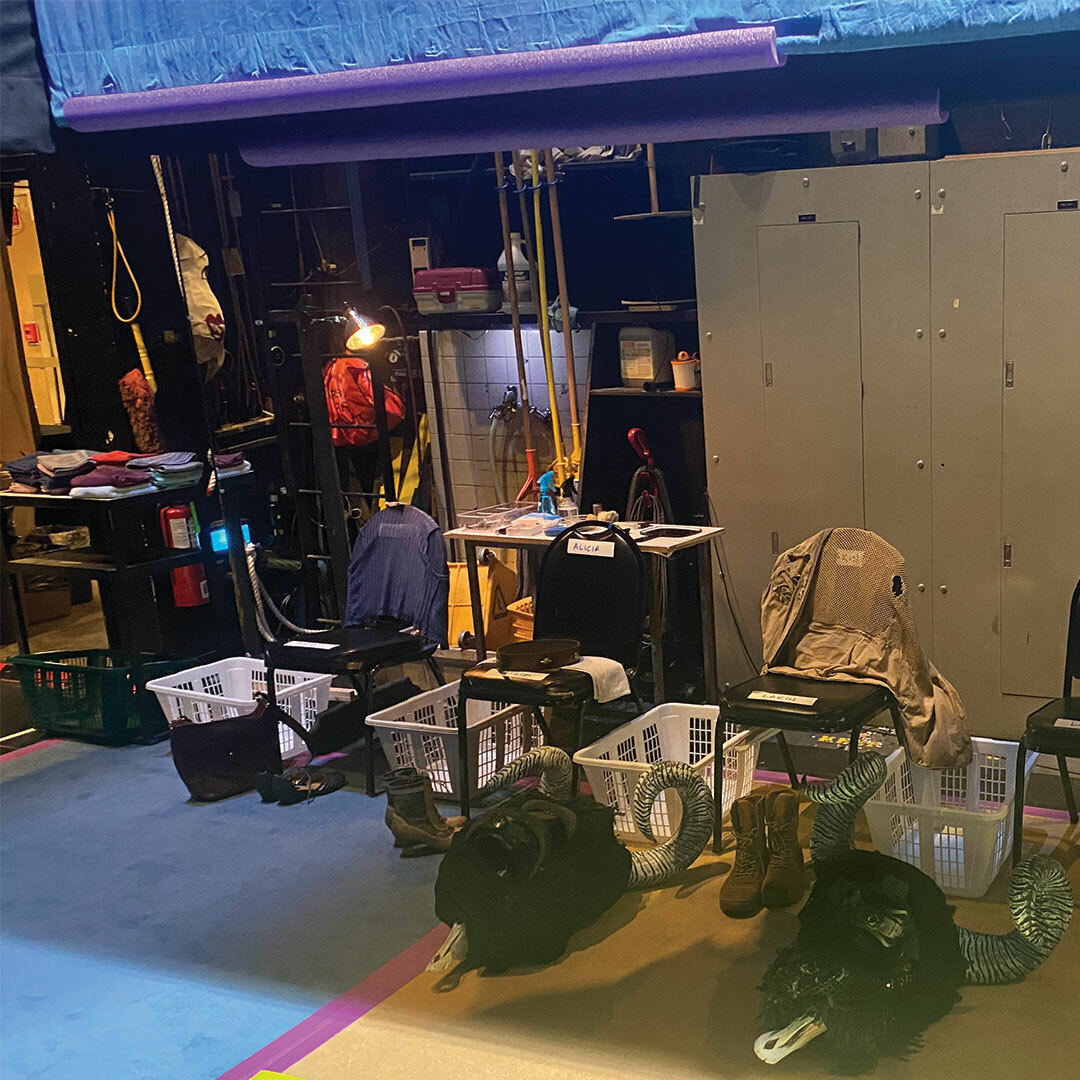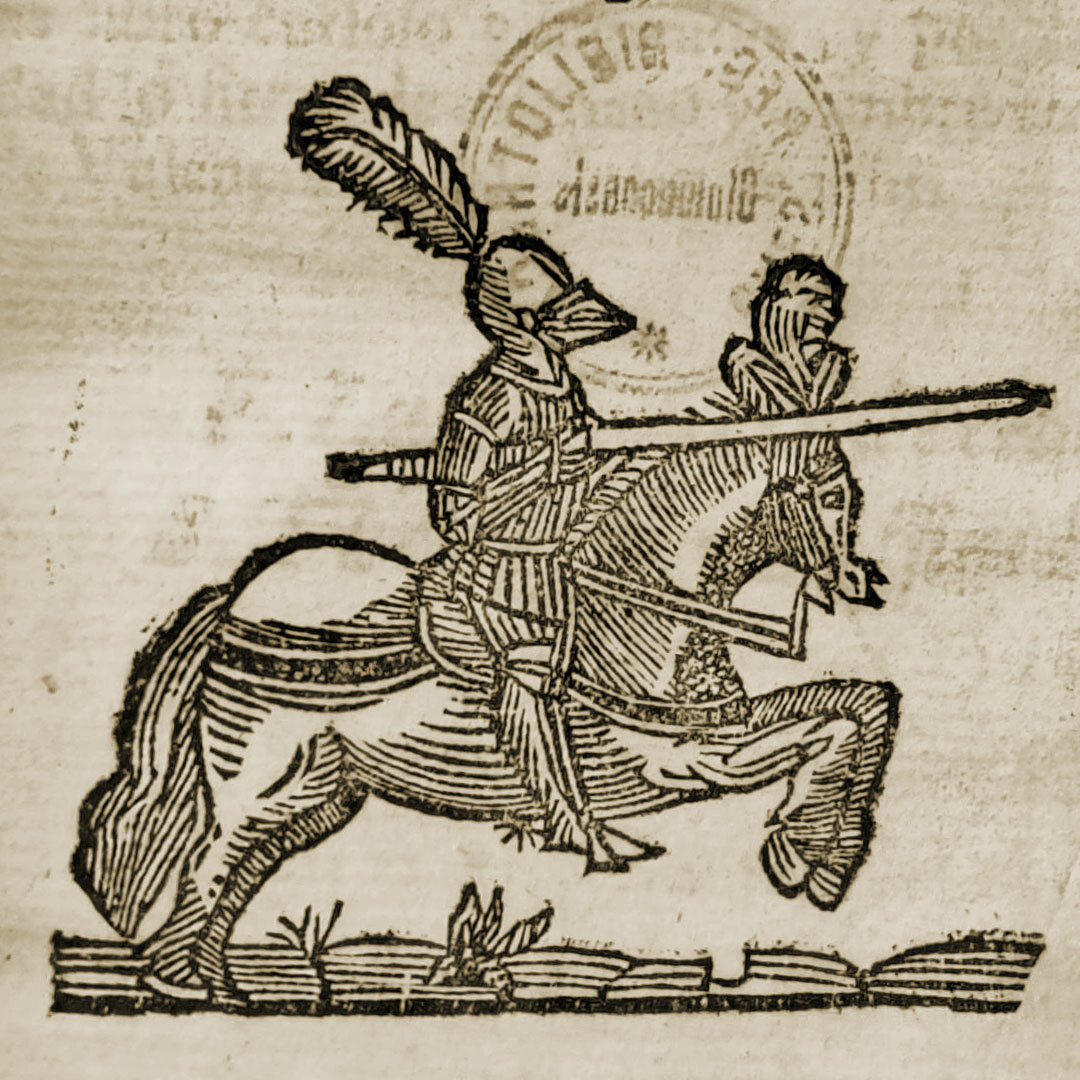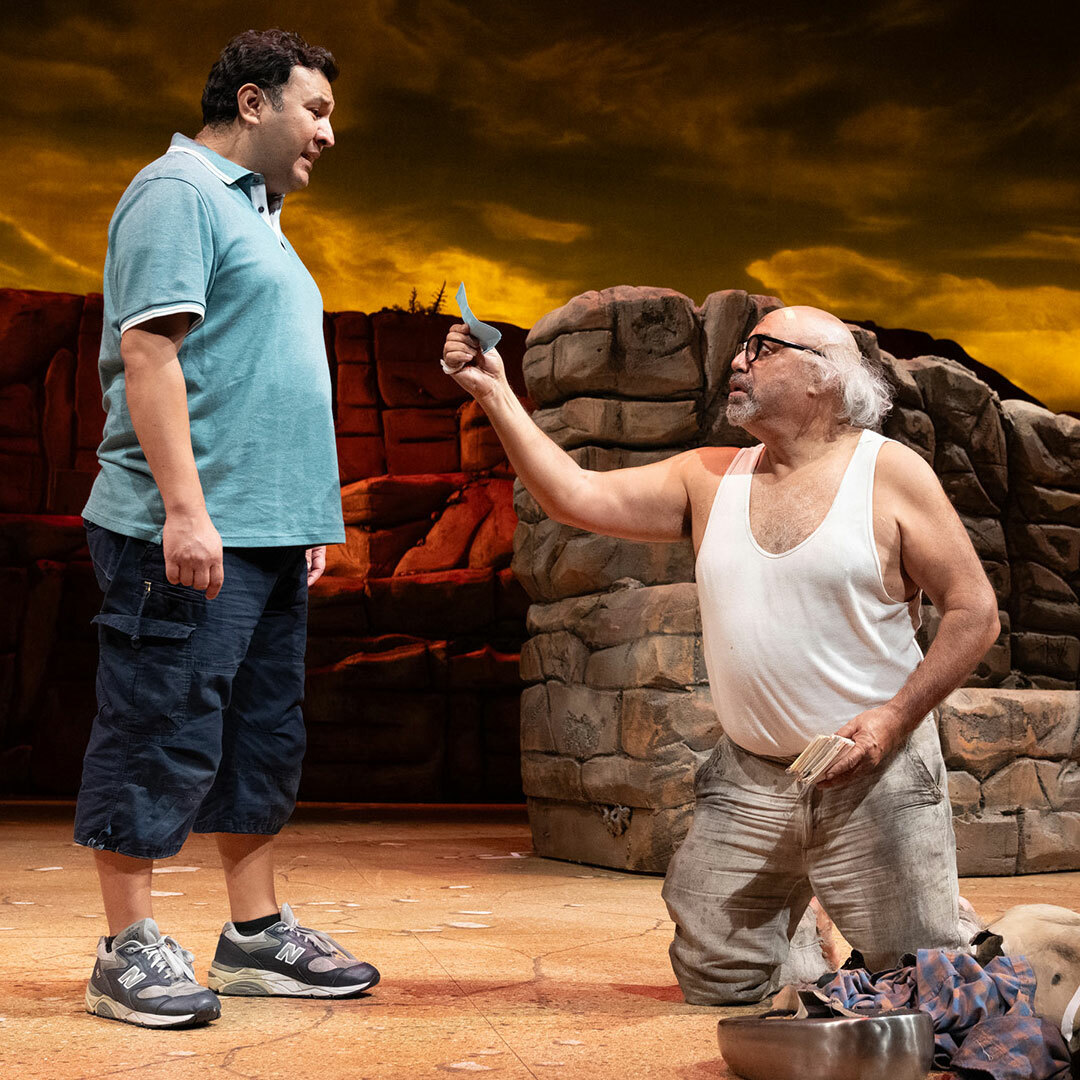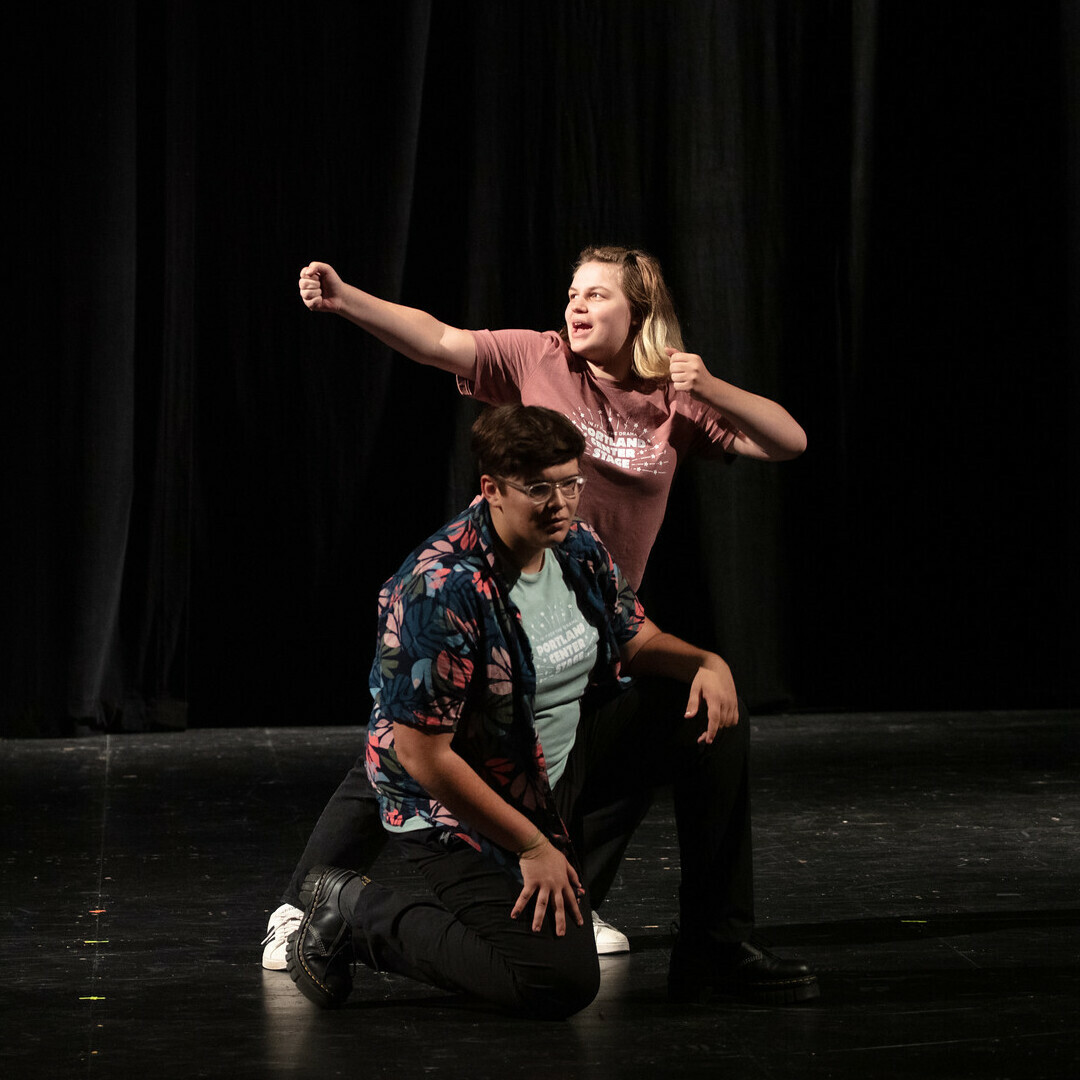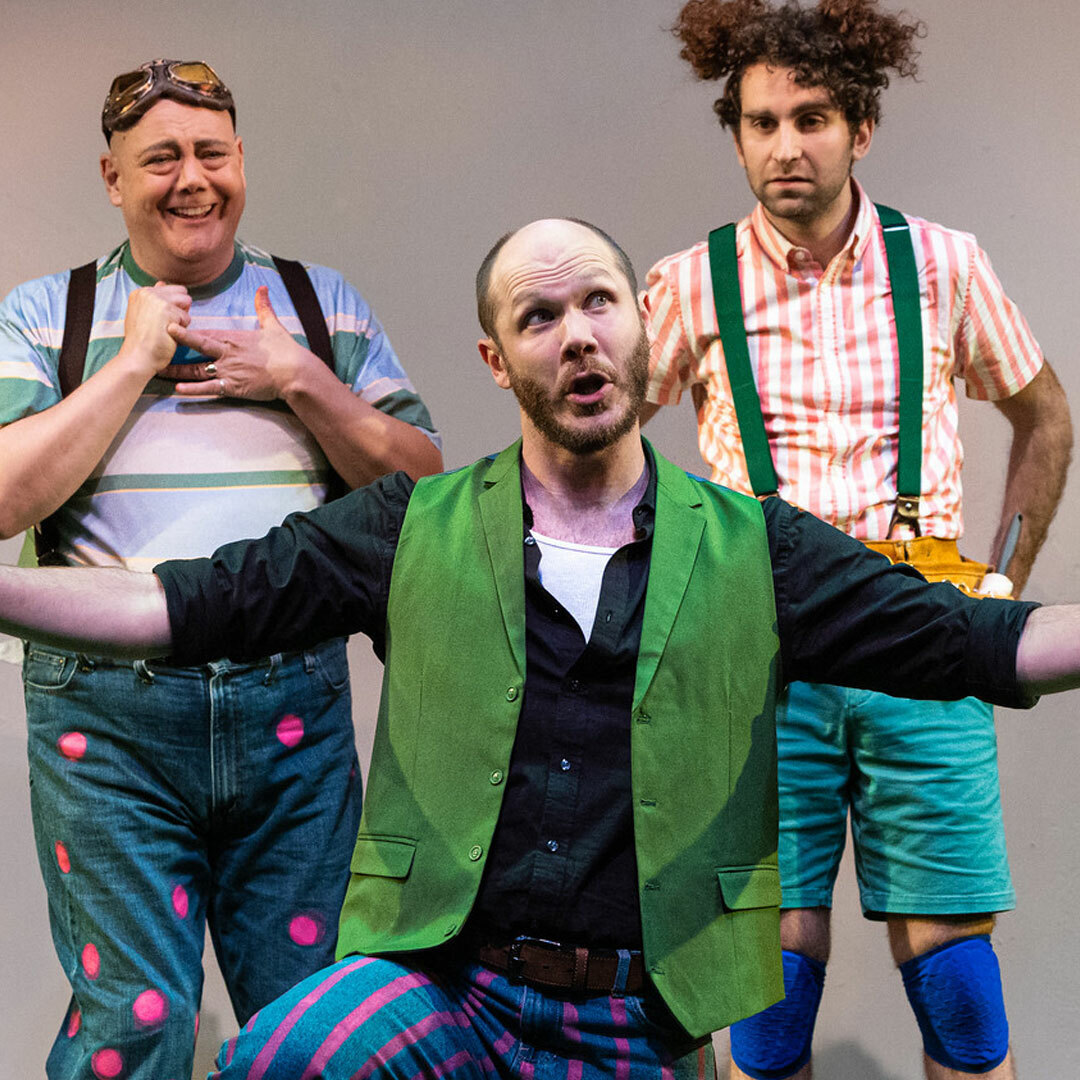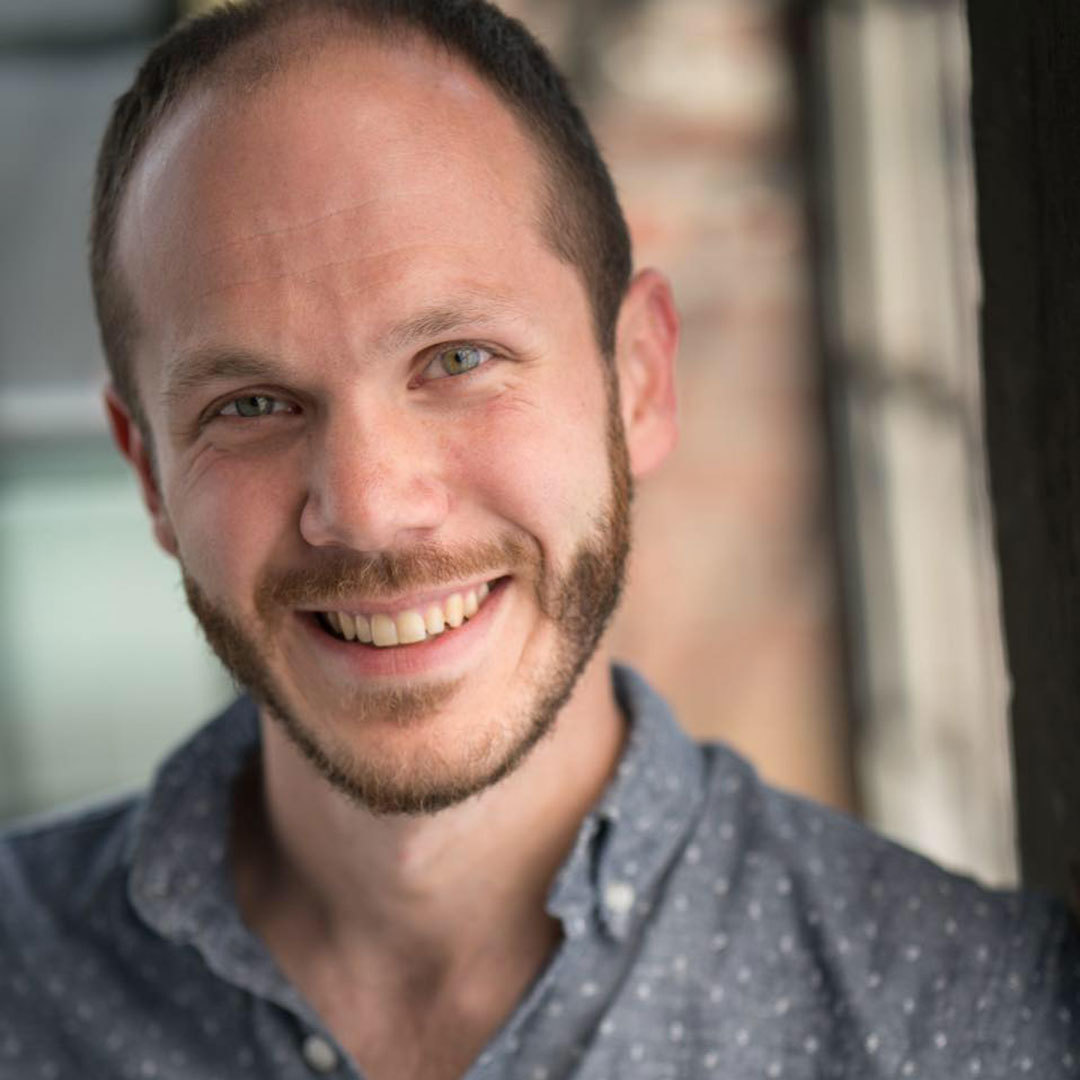A Picture of Life on the Border
Much of Quixote Nuevo takes place in aging professor Joe Quijano’s “fever dream” as he struggles with encroaching dementia. Throughout the play, we’re provided a window into Quijano’s imagination—a karaoke bar becomes a castle, a herd of sheep sounds like a dragon.
While these fantastical elements are important, the play is ultimately grounded in a much more realistic setting: a tiny desert town in Texas, on the border between the United States and Mexico. Themes of migration, fear and belonging run deeply through the play, and influence all of Quijano’s actions.
It can be difficult to get a sense of what border towns are actually like, especially for people living thousands of miles away from the border, which stretches from the tip of South Texas to the Pacific Ocean (Almond, CNN). It is a particular challenge because the border has increasingly become a symbolic place representing a contentious political divide. Those in favor of a border wall often refer to “the crisis” along the border, invoking the dangers of drugs and crime. However, those with more personal experience of border towns paint a different picture. Ron Nixon, the homeland security correspondent for the New York Times, notes that “in many ways, border cities and towns and the people who live there are no different from those who live in the rest of the United States.” Nixon notes that while drug smuggling and other crime does occur, most of the border crossings between the U.S. and Mexico are much more mundane. Almost one million people per day cross for their commute to work, or for recreational activities like shopping.
To be sure, living in a border town does pose unique challenges. The intense heat and vastness of the desert can quickly become dangerous. According to a guide on desert survival, desert air temperatures often reach 100°F or more, while ground temperatures can hit a scorching 150°F. Many desert plants grow low to the ground and don’t provide cover from the intense heat of the sun. Many border towns are tiny communities separated by vast areas of uninhabited desert. An article on West Texas towns notes that these “small cities and towns…are slowly turning into…ghost towns….in many places the…residents must drive hundreds of miles to get medical care” (Reinhold, 1985). This ghost-town transformation can be explained by the shifting needs of the population. With a growing shift away from agriculture, younger residents often leave their small communities in order to find jobs in larger Texas cities.
Despite these challenges, or perhaps because of them, residents of border towns are fiercely proud of where they live, and ultimately push back against how they are often portrayed in the media. The mayor of Laredo, Texas, Pete Saenz, was quoted by the New York Times: “We don’t see people across the river as living in another country. We see them as our family, as part of the same community.” The mayor of McAllen, Texas, Jim Darling, when interviewed by TIME magazine, said, “…just saying there’s a crisis on the border: it affects border towns. We’re a vibrant area.” Darling continued by cautioning against fear-mongering and frightening rhetoric about the border, noting that while it may create a dramatic story for the media to sell, it hurts border towns and their residents (Martinez).
We gratefully acknowledge our friends at Hartford Stage and their Education staff for the use of this material.
Portland Center Stage is committed to identifying & interrupting instances of racism & all forms of oppression, through the principles of inclusion, diversity, equity, & accessibility (IDEA).


